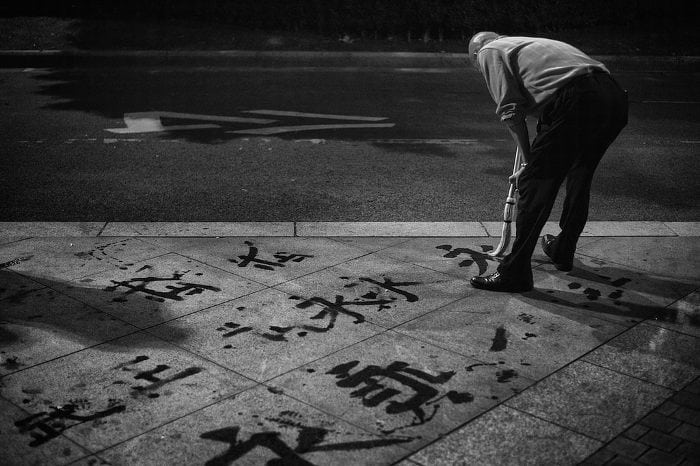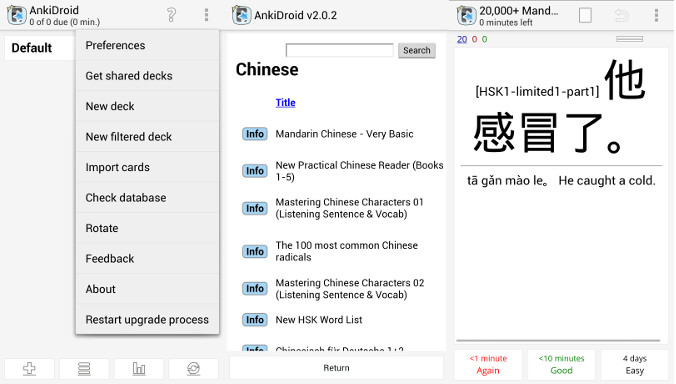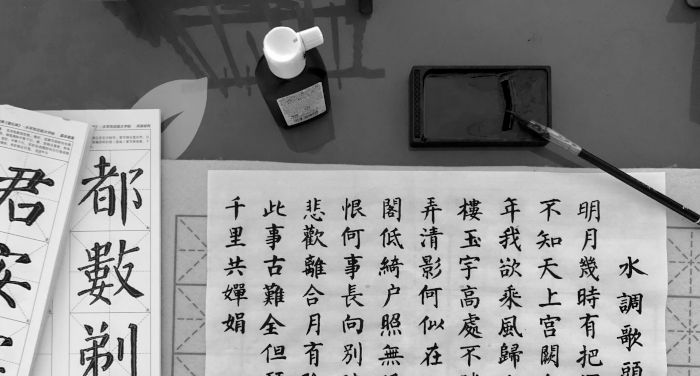
Adjectives
In Chinese, adjectives are called predicative adjectives because they have an intrinsic predicate value, in other words they posses the value given by the verb “to be”.
The adjective 漂亮 (piàoliang), for example, is translated as “to be beautiful” (meaning feminine beauty); 帅气 (shuàiqi) is translated as “to be handsome” (meaning male beauty), 新 (xīn) as “to be new”, 旧 (jiù) as “to be old”, and so forth.
Having an intrinsic predicate value means that, aside from exceptions, when we have to form a nominal predicate (she is beautiful, he is skinny), the verb “to be” must not be inserted, as it is already present in the adjective:
她漂亮。
tā piàoliang.
She is more beautiful.
The phrase, constructed like this, presupposes a comparison or contrast. So that the phrase loses this comparative sense, before the adjective a character called an intensifier would be inserted. There are many intensifiers as we’ll see later on. The most common one is 很 (hěn), which means “many”.
Using an intensifier, which is not generally translated, the phrase loses its comparative or contrasting value and therefore becomes neutral:
她很漂亮。
tā hěn piàoliang.
She is beautiful.
The negation of adjectives
Negating adjectives is very easy: just substitute the intensifier 很 with the negating adverb 不 (bù), which actually means “no / not”:
她不漂亮。
tā bù piàoliang.
She is not beautiful.
那家楼不新,很旧。
Nà jiā lóu bù xīn, hěn jiù.
That building is not new, it is old.
那个学生不认真。
Nà ge xuésheng bù rènzhēn.
That student is not diligent.
Forming questions with adjectives
There are various ways to form a question in Chinese. We have the question form using 吗 (ma) which simply consists of putting this character at the end of an affirmative phrase:
那个学校大吗?
Nà ge xuéxiào dà ma?
Is that school big?
Another way is by using the following grammatical rule that includes the use of predicative adjectives:
Adjective – negating adverb – adjective
那个学校大不大?
Nà ge xuéxiào dà bù dà?
Is that school big? [Literally: “is that school big or not big?”]
那个苹果小吗?
Nà ge píngguǒ xiǎo ma?
Is that apple small?
那个苹果小不小?
Nà ge píngguǒ xiǎo bù xiǎo?
Is that apple small?
Linking two adjectives
The adverb 又 (yòu) can be used to join two adjectives. In English, this particular use can be translated as “both… and…”. The character 又 finctions as an adverb, so it is placed immediately to the left of the predicative adjective in the phrase.
那家公司又大又干净。
Nà jiā gōngsī yòu dà yòu gānjìng.
That factory is both large and clean
那个人又聪明又帅气。
Nà ge rén yòu cōngming yòu shuàiqi.
That man is both intelligent and good looking.
Expressing a change in time
To express a change in time there are various expressions. One of the most common is the following:
越来越 (yuè lái yuè) + Adjective: “always more”
东西越来越贵。
Dōngxi yuè lái yuè guì.
Things are always more expensive.
那个人越来越聪明。
Nà ge rén yuè lái yuè cōngming.
That person is always more intelligent.
Another way for expressing a change is using the formula:
越 (yuè) + action verb + 越 (yuè) + predicative adjective
他越吃越胖。
Tā yuè chī yuè pàng.
The more he eats, the fatter he gets.
The above construction can be used to form longer phrases. Let’s take a look at the following examples:
花越开越大,越大越漂亮。
Huā yuè kāi yuè dà, yuè dà yuè piàoliang.
The more the flowers bloom, the bigger they get, the prettier they are.
老师越说,他越不明白。
Lǎoshī yuè shuō, tā yuè bù míngbai.
The more the professor speaks, the less he understands.
In written form, in place of 越, you can use the character 愈 (yù). For example:
苹果愈成熟愈好吃。
píngguǒ yù chéngshú yù hǎo chī.
The more mature the apples are the better they are.
她愈来愈漂亮。
tā yù lái yù piàoliang.
She is always more beautiful.
The change can also be expressed through the use of the modal particle placed at the end, right after the predicative adjective. The particle in question is the character 了 (le).
你胖了!
Nǐ pàng le!
You got fat!
花红了。
Huā hóng le.
The flowers turned red.
Neither…, nor…
In Chinese, a similar construction is easy to make by simply using the character 也 (yě), translatable as “also”. The form “neither…, nor …” is formed like this:
不 (bù) + Predicative adjective + 也不 (yě bù) + Predicative adjective
她不 胖也不瘦。
Tā bù pàng yě bù shòu.
She is neither fat nor thin.
他不 高也不矮。
Tā bù gāo yě bù ǎi.
He is neither short nor tall.
这间房间不 干净也不脏。
Zhè jiān fángjiān bù gānjìng yě bù zāng.
This room is neither clean nor dirty.
那只狗不 坏也不凶。
Nà zhī gǒu bù huài yě bù xiōng.
That dog is neither bad nor ferocious.
Linking more adjectives
In Chinese there’s a specific comma called the “drop comma”. The comma looks like this: 、
The drop comma takes on the role of creating “lists” or separating elements that connect to each other:
我买了梨子、苹果、西瓜、柠檬、等等。
Wǒ mǎi le lízi, píngguǒ, xīguā, níngméng, děngdeng.
I bought pears, apples, watermelons, lemons and so on.
她漂亮、聪明、高挑。
Tā piàoliang, cōngming, gāotiǎo.
She is beautiful, intelligent, tall and thin.
他帅气、聪明、高大。
Tā shuàiqi, cōngming, gāodà.
He is good-looking, intelligent, big and strong.
Adjectives used as adverbs
There are essentially two different ways to create an adverb by using adjectives. The first, quite simply, is by placing the adjective immediately before the verb:
快走!
Kuài zǒu!
Walk fast!
少吃吧!
Shǎo chī ba!
Eat less!
那个学生努力学习。
Nàge xuésheng nǔlì xuéxí.
That student studies intently.
慢慢吃。
Màn màn chī.
Eat slowly.
The second way is by having the adverbial particle follow 地 (de) the adjective:
他热情地接待我们。
Tā rèqíng de jiēdài wǒmen.
He treated us warmly.
他快地走。
Tā kuài de zǒu.
He walks quickly.
Note that, in many Chinese texts, you might find the adverbial particle 地 written like this: 的 (de).
Photo Credits: ![]() Practising Calligraphy by c-head
Practising Calligraphy by c-head




Very clear explanation. Although I was wondering if you could provide an explanation on when an adjective should or could be placed right before a noun withouout using 的.
As a general rule you will add 的 when the adjective preceding the noun has 2 syllables like 漂亮的女孩 and without 的 when it has only one syllable as 美女.
Your explanations and examples are excellent! Thank you.
: )